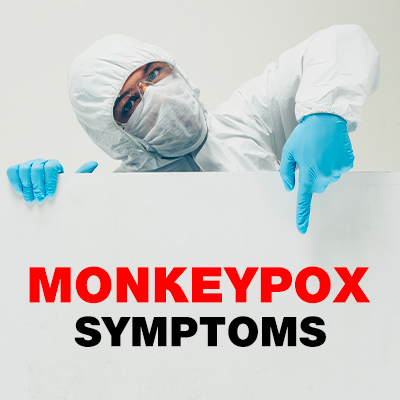What are Zoonotic diseases?
A zoonotic disease is defined as “A disease or infection that can be transmitted naturally from vertebrate animals to humans or from humans to vertebrate animals.” The term vertebrate here includes birds, reptiles, and mammals (pets, farm or wild). Interestingly, more than 60% of germs causing diseases in humans are zoonotic in origin. These include a wide variety of bacteria, viruses, fungi, protozoa, parasites, and other pathogens. Some well-known examples are bubonic plague, rabies, scabies, anthrax, Ebola, SARS, bird flu and swine flu.
SARS CoV-2 that causes Covid-19 disease is also zoonotic and so is the newer threat called monkeypox.
[the_ad id=”6076″]
What is Monkeypox?
Monkeypox, caused by the monkeypox virus is a viral zoonotic disease and has symptoms like smallpox. The monkeypox virus is a part of the variola virus family, which belongs to the genus Orthopoxvirus (the virus which causes smallpox).
How is Monkeypox transmitted?
1. Animal to human:
Zoonotic disease transmission occurs from direct contact with blood, blood fluids, or cutaneous or mucosal lesion of infected animals. Animals who are infected can also pass this disease if they either scratch or bite you. Consuming uncooked contaminated meat can also spread this disease.
The virus finds an entry in the body through a break in the skin or mouth, nose, or eyes.
2. Human to human:
Monkeypox can spread from one person to another via close contact. Let us have a look at how an infected person can transmit monkeypox to another through close contact for a prolonged period.
- Contact with body fluids i.e., blood or semen
- Contact with monkeypox skin lesions
- Respiratory droplets you breathe in
- Objects infected with body fluids like bedding or clothes etc
Is monkeypox an STD (sexually transmitted disease)?
This disease is not exclusively sexually transmitted, but you can get affected with it from other forms of close contact; e.g., an infected person can pass it on during intercourse. WHO (World Health Organization) has stated that many cases are sexually transmitted, especially among men who have a sexual relationship with men.
Monkeypox symptoms:
It takes about a few days to a few weeks for developing symptoms. Common symptoms include:
- Fever
- Chills
- Headache
- Muscle aches
- Swollen lymph nodes
- Painful rash on pubic area, genitals, or around the anus
- Bumps on skin
- Bumps look like blisters, pus-filled bumps, or open sores
- Fever, flu-like symptoms before the rash
Apart from these, infected individuals have reported other symptoms too such as pain around the anus, bleeding in the lower part of the intestine, and painful inflammation of the anus and the rectal mucosa lining.
Remember that everyone with monkeypox need not develop all the symptoms. Of note, many cases do not have the usual or classical pattern of symptoms in the current outbreak.
What should I do if I suspect monkeypox?
Remember that symptoms can be a guiding factor, but diagnosis is always better left to professionals.
You must seek immediate consultation with a doctor if you:
- have a fever, swollen lymph nodes
- have new rash or sores
- came in close contact with an infected individual
- experience trouble breathing
- had loss of consciousness
Click individual topics to read more about Monkeypox: Overview, prevention and treatment.
Click https://bit.ly/2Y4QP9p to start your doctor consult now!
Source:

Dr. Mamta Lele- Pawara
(MD Ayurveda-Internal Medicine, CRAV-Kayachikitsa, MA Sanskrit)
